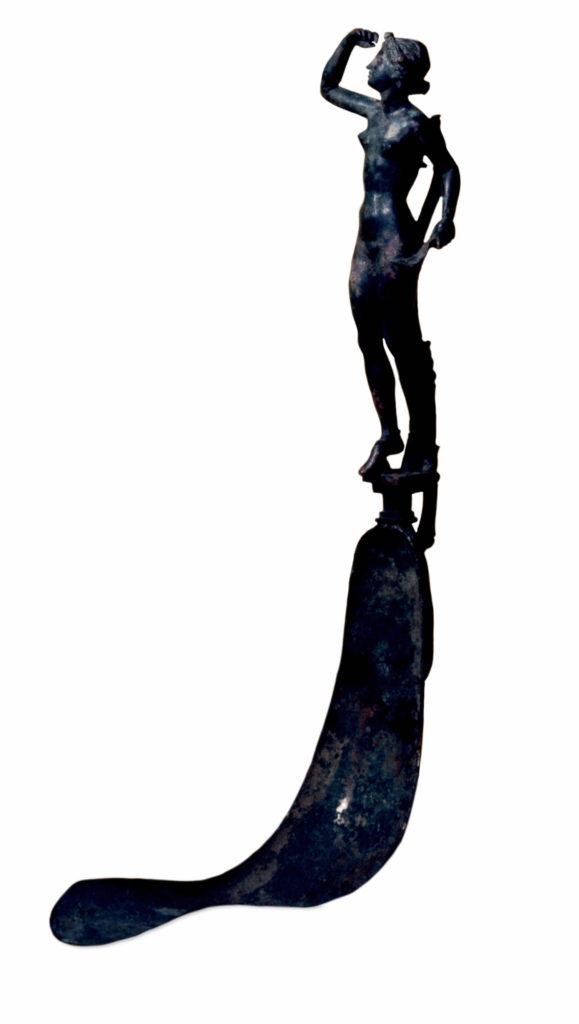
Bronze strigil with handle in form of a girl, ca. 300B.C.E. Bronze, 40cm tall weighing 1062 grammes. British Museum.
At just 40 centimeters, this figure is unassuming next to the momentous collections at the British Museum. Surprisingly, this bronze strigil is a symbol of girlhood strength. Long before bath bombs, shower gel, and dry shampoo, girls were using a much different tool to get clean.
A strigil is a curved blade used to scrape dirt, oil, and sweat off the body, typically after exercise. The curves in the blade were designed to go along the curves of the body and to be scraped across the skin after a scented oil was applied. It sounds bizarre, but it’s really not too far away from all the toners, exfoliates, and face masks we use to keep clean today.
The blade is from the Hellenistic period, around 300 BCE to 1 BCE. During this time, sport was particularly important as a status of power and strength. Civic and daily life in ancient Rome centered around bathing in public bath complexes. Use of a beautifully made strigil such as this one was impressive in the shared public baths. The strigil was a symbol of sportsmanship and bathing. It was even exhibited at four Olympics, and the girl standing confidently on top demonstrated girlhood as having an important role in the Hellenistic world.
The girl in bronze standing on the top of this strigil is confident, her pose showing her strength and power. It also shows her beauty, with her hair wound into a bun with three flowers. The girl is both beautiful and an athlete – embodying notions associated with female (beauty) and male (athleticism). During the next 2000 years, however, girls were given the choice between traditional “beauty” or sports.
The girl in bronze standing on the top of this strigil reminded me of this iconic Instagram post from Team USA in 2016. The girl on the strigil, Team USA, and countless of other examples show that choosing between traditional “beauty” or strength isn’t a choice girls have to make anymore – and really, it never has been. Girls can have both.
https://www.instagram.com/p/7DbRiJrIUq/
Acquired by the British Museum in 1873, the girl on the strigil is a role model for girls visiting the museum. In a museum where male history often takes center stage, having a girl in such a confident, powerful stance has and will continue to inspire girls. While it is small, it is mighty.
-Chloe Turner
Junior Girl
Girl Museum, Inc.
This post is part of our 52 Objects in the History of Girlhood exhibition. Each week during 2017, we explore a historical object and its relation to girls history. Stay tuned to discover the incredible history of girls, and be sure to visit the complete exhibition to discover the integral role girls have played since the dawn of time.
